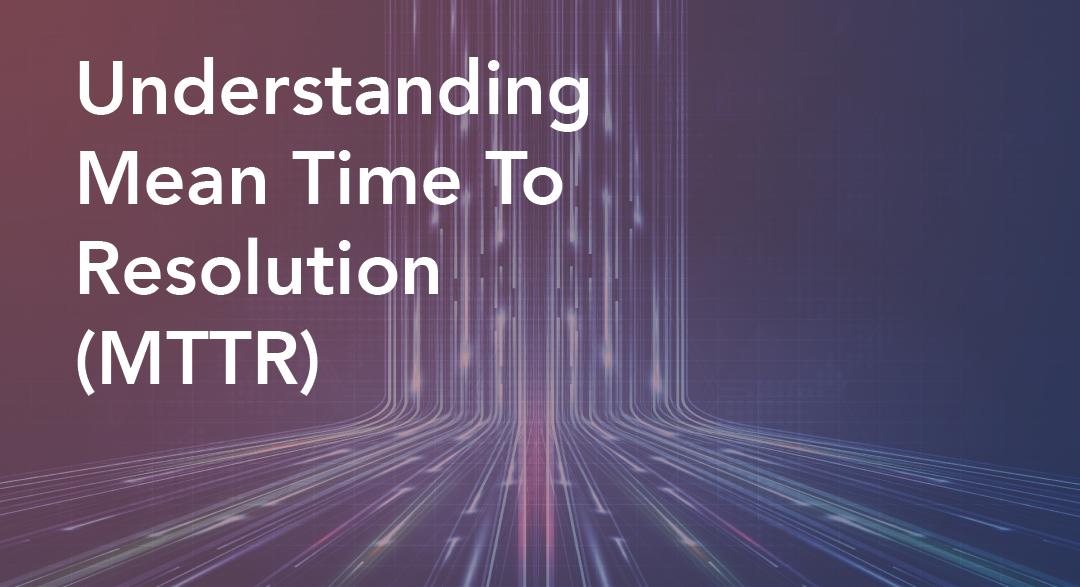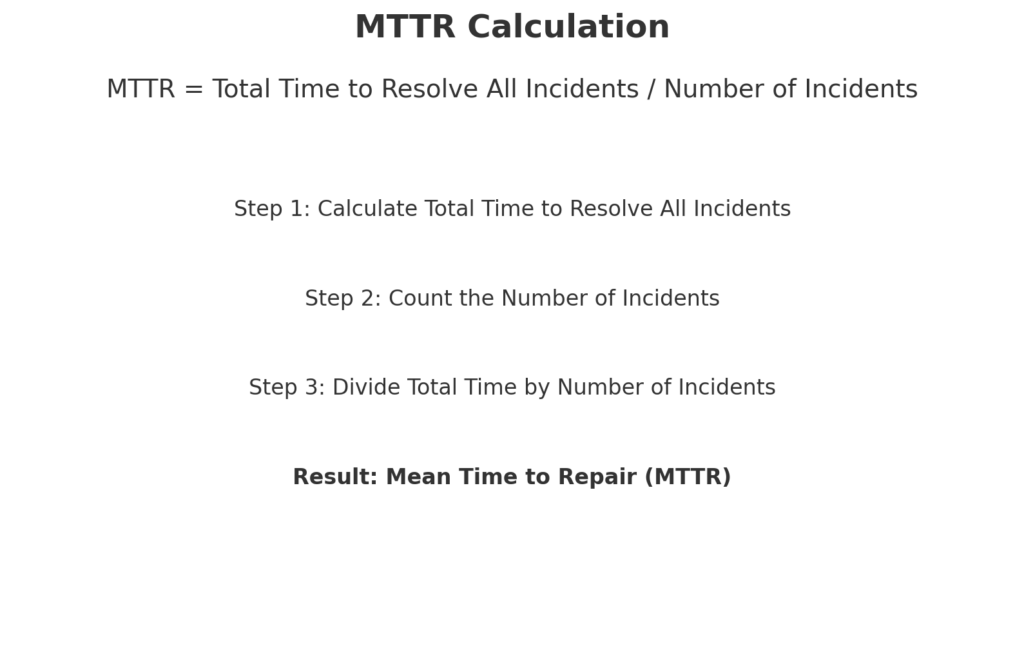28 August 2024
Understanding Mean Time to Resolution (MTTR) in Network Management

In managing computer networks, keeping services running and minimizing disruptions is crucial. One important way to measure how well network managers and operators handle problems is through Mean Time to Resolution (MTTR).
So, What is Mean Time to Resolution (MTTR)?
MTTR is a key performance indicator used in network management to quantify the average time it takes to resolve a network issue or outage from the moment it is detected.
This metric encompasses the entire process, from initial problem identification (when a device such as a router, switch, or server goes down or starts experiencing issues) through to the restoration of normal service. MTTR is calculated by taking the total time spent on resolving all incidents within a specific period and dividing it by the number of incidents.

In simpler terms, MTTR provides a clear picture of how long your network is out of action during a typical incident and how quickly your team can bring everything back to normal. It’s a reflection of the efficiency and effectiveness of your incident response processes.
Why MTTR Matters for Network Managers and Operators
MTTR is more than a mere number; it serves as a direct indicator of the health of your network management practices. Here’s why it’s so crucial:
- Minimizing Downtime: Networks are the backbone of any organization, and every minute of network downtime can result in lost productivity, customer dissatisfaction, and revenue loss. MTTR helps network managers understand how quickly they can respond to and resolve issues, thus minimizing downtime and its associated impacts.
- Operational Efficiency: A lower MTTR indicates a streamlined, efficient response process. It reflects well on the team’s capability to detect, diagnose, and fix issues quickly. This significantly enhances the network’s reliability, instilling a heightened level of confidence and bolstering the team’s reputation within the organization.
- Customer Satisfaction (this is the most imporant one): In today’s fast-paced digital environment, customers expect near-instantaneous service. A quick resolution time keeps customers happy by ensuring that disruptions are brief and service is restored promptly.
- Resource Management: MTTR can also help in assessing how effectively resources are being used during incident response. A consistently high MTTR might indicate bottlenecks or inefficiencies that need to be addressed, such as outdated tools or a lack of adequate training for the team.
What is a Good MTTR?
The definition of a “good” MTTR can vary depending on the industry, the complexity of the network, and the nature of the incidents. However, there are some general benchmarks that network managers can consider:
- Industry Standards: In many industries, a good MTTR is typically under 4 hours. However, for high-stakes environments, such as financial services or healthcare, MTTR might need to be even lower, often measured in minutes.
- Historical Performance: Your historical data is a great baseline. If your average MTTR has been 6 hours, bringing it down to 4 hours could be a significant improvement. The key is consistent improvement over time.
- SLAs and Customer Expectations: Service Level Agreements (SLAs) often dictate the acceptable MTTR for your organization. These agreements are usually based on customer expectations, which can vary greatly. Meeting or exceeding these SLAs should be the target.
- Comparative Analysis: Look at similar organizations within your industry. Benchmarking against peers can provide insight into where your MTTR stands and what might be achievable.
Conclusion
MTTR stands as a critical measure that network managers and operators need to monitor and improve. It acts as a clear signal of how rapidly your team can recover from network issues, affecting everything from operational efficiency to customer satisfaction. By aiming for a reduced MTTR, network teams are not only able to improve their service reliability but also bolster their overall network management approach. Ultimately, a successful MTTR is one that meets or surpasses your organization’s and its customers’ expectations, while continually striving for quicker and more effective resolutions.